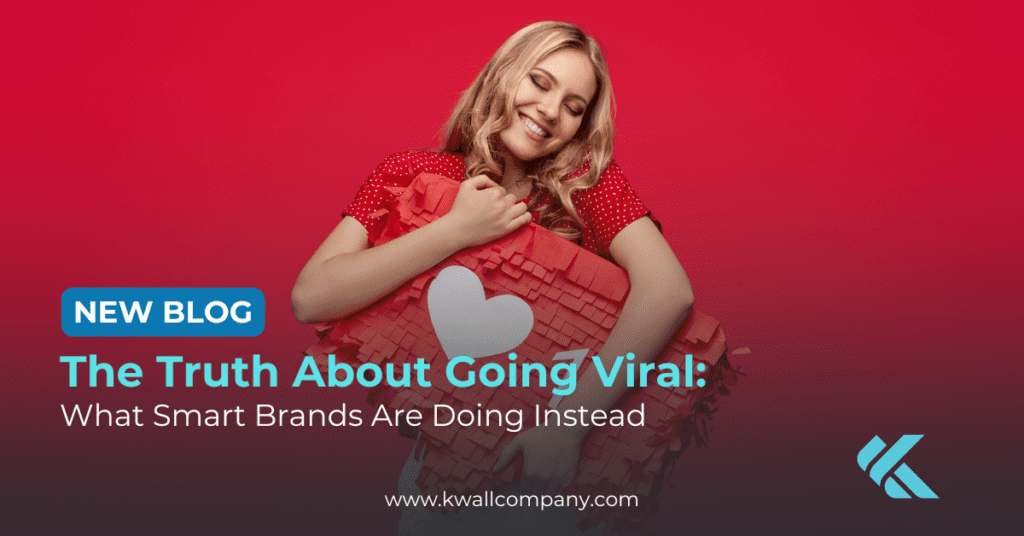
Not long ago, going viral was every marketer’s dream. A viral campaign meant massive reach, strong engagement, and lots of brand awareness. One of the best examples was Metro Trains Melbourne’s 2012 “Dumb Ways to Die” campaign. It was funny, catchy, and led to parodies, remixes, and millions of downloads. It helped save lives and boosted awareness—proving that smart, viral marketing can work.
But today, going viral isn’t always a good thing.
In fact, many viral moments happen for bad reasons: controversy, outrage, or even fake information. Take Dolce & Gabbana’s “DG Loves China” campaign—it went viral, but for all the wrong reasons. The backlash was so bad that the brand lost around $400 million in sales and hurt its image in one of its biggest markets.
This raises a big question for modern marketers: Do we even want to go viral anymore?
Is Viral Marketing Still Worth It?
Yes—but it needs to be done carefully.
Virality still matters. It boosts brand recall, sparks engagement, and helps content spread faster. But with today’s fast-moving social media world, what works has changed. You need more than catchy content. You need smart, safe, and shareable content.
To help with this, marketing expert and educator created the SPREAD framework—a tool to help brands build better viral campaigns. It’s based on research and real-world results and gives marketers a checklist to make sure their content is both impactful and safe to share.
Let’s break down each part of SPREAD.
The SPREAD Framework for Smart Virality
1. Socially Useful and Sensitive
Great content does more than entertain—it helps people connect with causes, values, or personal identity. People are more likely to share something that makes them feel good or sends a strong message.
Example:
- 2024 TikTok campaign promoted language learning and equity, gaining 800 million+ views and a big spike in downloads.
- Dove’s “Cost of Beauty” campaign talked about mental health and social media, earning billions of impressions and boosting sales.
Ask yourself:
- Does this content help people express their values?
- Will people feel proud to share it?
- Does it ignore or respect current social issues?
2. Provocative (In the Right Way)
Bold content can spark big conversations—if done carefully. It should challenge norms or surprise people—but not offend or oversimplify serious issues.
Example:
- Patagonia’s “Don’t Buy This Jacket” challenged overconsumption while staying true to their eco values.
- Elf Beauty’s “So Many Dicks” called out boardroom inequality, using bold humor to start a real conversation.
Warning:
Avoid being tone-deaf. Apple’s “Crush!” ad and Pepsi’s Kendall Jenner protest ad were meant to be bold, but they missed the mark—and audiences were quick to call them out.
Ask yourself:
- Is this message surprising in a good way?
- Does it feel respectful and thoughtful—or risky and shallow?
3. Replicable
The best viral content invites people to remix, share, or make their own version. Think memes, challenges, or fun user-generated trends.
Examples:
- Heinz’s “Draw Ketchup” let fans post drawings, earning millions in media value and selling out limited bottles in hours.
- TikTok’s “Roman Empire” trend was copied by brands and creators, generating billions of views.
Ask yourself:
- Can people easily participate in or copy this idea?
- Is it too polished or complicated to inspire user engagement?
4. Emotional
Emotions are a key driver of shares. But today, it’s not just about how strong the emotion is—it’s about how relevant it is.
Examples:
- Airbnb’s “Made Possible by Hosts” shared real, heartfelt travel stories, boosting traffic and record profits.
- On the other hand, Peloton’s “Christmas Gift” ad was meant to be emotional but came off as tone-deaf and sexist.
Ask yourself:
- Does the content feel authentic and emotional?
- Does the emotion match your product or brand message?
5. Ambiguous
A little mystery can be powerful. People love to decode things and share their thoughts or theories.
Examples:
- Lego’s “Rebuild the World” used surreal scenes that made people think and talk.
- India’s Wrogn brand used cryptic posts with the hashtag #IYKYK, driving huge impressions in just one day.
Ask yourself:
- Does this content spark curiosity?
- Will people want to talk or guess what it means?
6. Distributive
It’s not enough to create something cool—you have to make sure it can spread easily across platforms. That means making content that works on Instagram, TikTok, Reddit, WhatsApp, and more.
Examples:
- The #DollyPartonChallenge worked on multiple platforms by using different personas for LinkedIn, Instagram, Tinder, etc.
- Barbie’s viral posters and the AI generator tool let fans make their own versions, helping the #Barbenheimer trend explode.
Ask yourself:
- Does the content encourage tagging or sharing?
- Are there easy-to-use tools (templates, hashtags, stickers) built in?
- Can people use this content across different social media platforms?
Want to Go Viral? Here’s What’s Changed
Today, virality isn’t about chasing clicks at any cost. It’s about creating content that people want to share because it’s valuable, meaningful, and fun—not because it’s shocking or controversial.
The SPREAD framework helps brands build content that is:
- Safe to share
- Aligned with brand values
- Ready to go viral—for the right reasons
So before you ask, “Will this go viral?”, ask instead:
“Is this something people will love, trust, and feel proud to share?”
That’s the new gold standard for smart, viral marketing.
Explore Further
Virality isn’t what it used to be—and neither is the strategy behind it. As platforms evolve and audience expectations shift, smart brands are leaning into meaningful, emotionally resonant, and distributable content. The SPREAD framework offers a thoughtful way to go viral without compromising your brand.
For more insights, see the original article: A New Framework for Going Viral


